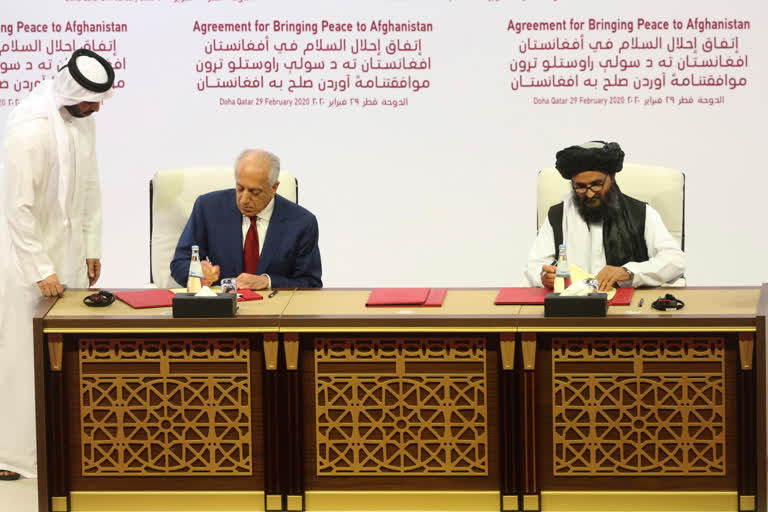Kabul: The former Soviet Union marched into Afghanistan on Christmas Eve, 1979, claiming it was invited by the new Afghan communist leader, Babrak Karmal, setting the country on a path of 40 years of seemingly endless wars and conflict.
More than 5 million Afghans fled to Pakistan and 3 million to Iran after 1980 and today, Afghans still make up the world's second-largest refugee population. After the 9/11 terrorist attacks in America, the U.S. invaded Afghanistan to oust the Taliban regime which had harboured al-Qaida leader Osama bin Laden.
Now, after an 18-year war, the possibility of peace has emerged as the United States and the Taliban signed a peace deal Saturday, one that could offer a glimmer of hope to war-weary Afghans.
Here is a timeline of some key dates in Afghanistan's 40 years of wars:
Dec. 25, 1979 — Soviet Red Army crosses the Oxus River into Afghanistan. In neighbouring Pakistan, Afghan mujahedeen, or Islamic holy warriors, are assembling, armed and financed by the U.S. for an anti-communist war.
1980s — CIA's covert Operation Cyclone funnels weapons and money for the war through Pakistani dictator Mohammed Zia-ul Haq, who calls on Muslim countries to send volunteers to fight in Afghanistan. Bin Laden is among the thousands to volunteer.
1983 — President Ronald Reagan meets with mujahedeen leaders, calling them freedom fighters, at the White House.
September 1986 — The U.S. provides the mujahedeen with shoulder-held anti-aircraft Stinger missiles, which turned around the course of the war and sped-up negotiated Soviet withdrawal.
January 1987 — Afghan Communist President Najibullah launches National Reconciliation Program to encourage the mujahedeen to join a new government of national reconciliation; they refuse.
Feb. 15, 1989 — The last Soviet soldier leaves Afghanistan, ending 10 years of occupation
April 1992 — Mujahedeen groups enter Kabul as Najibullah tries to flee. He is stopped at the airport and put under house arrest at a U.N. compound.
1992-1996 — A power-sharing deal among seven mujahedeen leaders falls apart and they spend four years fighting one another; much of Kabul is destroyed and nearly 50,000 people are killed.
1994 — The Taliban emerge in southern Kandahar, mainly from the ranks of former mujahedeen fighters. They take over the province, setting up a rule adhering to a strict interpretation of Islam.
Sept. 26, 1996 — The Taliban take Kabul after sweeping across the country with hardly a fight; Northern Alliance's Tajik leader Ahmed Shah Masood and his forces retreat north toward the Panjshir Valley. The Taliban hang Najibullah and his brother.
1996-2001 — Though initially welcomed as an end to the fighting, the Taliban rule with a heavy hand under Mullah Mohammed Omar, imposing strict Islamic edicts, denying women the right to work and girls the right to go to school. Punishments and executions are carried out in public.
2000 — The Taliban eradicate opium production but labourers who lived off the poppy fields become even poorer.
March 2001— The Taliban dynamite the world's largest standing Buddha statues in Bamyan province, to global shock.
Set. 9, 2001 — Two Arab-speaking suicide bombers, posing as journalists with Belgium passports, kill Masood in northern Takhar province, two days before the 9/11 terrorist attacks.
September 2001 — Washington gives Mullah Omar an ultimatum: hand over bin Laden and dismantle militant training camps or prepare to be attacked. The Taliban leader refuses.
